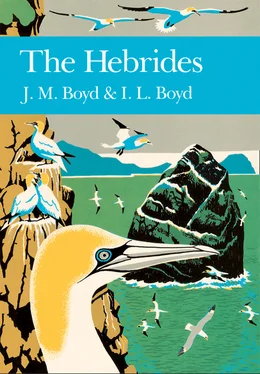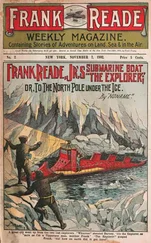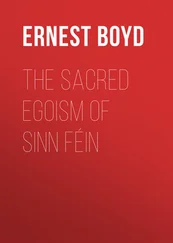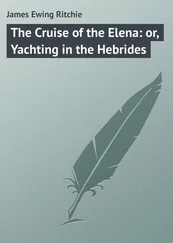In the Hebrides, the islands became colonised from the south as the British Isles emerged from the retreating ice sheet. As time advanced more and more plants and animals arrived. Changes in sea level destroyed ‘land bridges’, thus isolating fragments of erstwhile mainland populations. The flora and fauna resulting from natural colonisation and physical isolation have been further complicated by man-assisted colonisation. Again in theory, many original colonisers of the north of Scotland may have been eliminated from the mainland by species which arrived later but did not reach the islands. The Hebrides, therefore, may possess relict life forms, such as the fossorial bee ( Colletes floralis ), the arctic charr ( Salvelinus alpinus ), and the plant Koenigia islandica. The Soay sheep ( Ovis aries ) of St Kilda is an outstanding example of a domesticated animal introduced by man to Britain in neolithic times, which became extinct as a breed (superseded by improved breeds of sheep) in all areas except the remotest and most inaccessible of islands, Soay at St Kilda.
The distribution of species in the Hebrides, therefore, begs many questions of when and how they came to be there. Analysis of pollen from peat and the beds of lochs have shown much of the time-scale and species of colonisation of the islands by vegetation; the affinities of most plant species to ‘oceanic’ and ‘continental’ biomes have been described; problems of taxonomy have arisen and identification of rare or key species has been questioned when voucher specimens and satisfactory records were lacking. However, the biogeography, taxonomy, and genetics of the Hebridean flora and fauna is still a wide-open field for research. This work is closely linked to the need for more information on the invertebrate fauna—and, with new techniques such as ‘genetical fingerprinting, in the revision of existing information on the entire biota.

St Kilda field-mouse (Photo D. MacCaskill)
The flora and fauna of the Hebrides are rich in distinct island taxa: the St Kilda sub-species hirtensis and the Rum sub-species hamiltoni of the field mouse ( Apodemus sylvaticus ), (Delany, 1970); dark Hebridean forms of the dark green and the small pearl-bordered fritillaries ( Argynnis aglaia and A.selene ), the common blue ( Polyommatus icarus ), the grey mountain carpet ( Entephria caesiata ), the twin-spot carpet ( Perizoma didymata ), the mottled beauty ( Alcis repandata ), and the lesser yellow underwing ( Noctua comes ). Distinct forms of the bumble bee Bombus jonellus and the dragonfly Sympetrum nigrecens occur in the Hebrides. Amongst birds, the St Kilda wren ( Troglodytes t. hirtensis ) is distinct from that of the Hebrides ( T.t.hebridensis ), and in fact more closely resembles the Fair Isle wren ( T.t.fridariensis ), which in turn is distinct from the Shetland wren ( T.t.zetlandicus ). Starlings ( Sturnus vulgaris ) from Shetland and the Outer Hebrides are thought to be distinct from the race occupying the rest of Britain.
Professor R.J. Berry (1979, 1983) has examined the genetical and evolutionary significance of the Hebrides, where in his own words ‘genes and geography meet’. He concludes:
The physical tides that have caressed and pounded the Western Isles have biological parallels: waves of animals and plants have beaten on the islands and formed their biological environment in the same way that the waves of rock, ice and water have determined their geographical limits. And just as the physical waves have laws which must be obeyed, so the interactions of drift, migration, and selection have forged the genetical constitution of the island races; and as the incoming tide cleans the sands and rocks over which it passes, but leaves unexplained features in secluded eddies, so the biological tides have left us with many genetical puzzles. The scientist believes as an article of faith that these eddies can be explained as knowledge accumulates, though some will remain as statistical anomalies of history.
Grand Relationships
We have used the example of genetical evolution and change to set the islands in the light of scientific discovery. We see the Hebrides not simply as the beautiful physical shapes they are, but as complete little worlds in themselves—each a unique repository of life. But there are also the rocks and the puzzles they hold. We try to interpret the genesis of the Hebrides from the Geological Record and find, in the great span of geological time, that part of the earth’s surface which was destined to become the British Isles, moved northward across the surface of the globe from tropical to temperate latitudes. Having done so, and assumed its present geographical stance, the crustal plates parted and the British Isles were formed. This is a spellbinding story captured forever within the rocks of Ireland and Western Scotland, including the Hebrides. The disentanglement of the rocks on the north-west seaboard of Scotland, which plumb the depths of 3000 million years, is a wonderful achievement, and now part of classical geology of world-wide significance. The dynamic, three-dimensional perception of geological processes over such long periods of time, punctuated as they were by upheavals of the earth’s crust such as the Grenville and Caledonian orogenies and the Moine Thrust, are so complex as almost to defeat lay presentation.

Looking like a living tissue, the Jurassic sandstone at Elgol, Skye has been eroded by the sea into this delicate, pale yellow, lacunary web (Photo J. M. Boyd)
The coral islands of tropical seas display a biological process in which living corals extract lime from the sea water and build enormous reefs which, following changes in sea level, become raised islands or coastal platforms. In the Hebrides, there is at work a similar grand relationship between sea, land, and air, in which marine invertebrates and algae provide a vital link in the accretion of shell sand. Since the end of the last ice age, about 10,000 years ago, vast quantities of lime have been extracted from the sea-water by countless generations of shell-forming animals, whose remains have been ground in the surf and cast up by sea and wind upon the rocky shores. Spacious coastal platforms of dunes and machair (Hebridean maritime grassland) have been formed in the southern Outer Hebrides, Tiree and Coll, enriching both the natural and human ecology of these islands (See here). The whole process is supported by untold numbers of animals and plants of many different kinds. A thimbleful of shell sand, spread and magnified, will reveal the fragmented shells of a host of humble creatures, each of which makes its tiny but vital contribution to the grand scheme.
Islands for Science
The Hebrides, therefore, have a potential for research in fundamental, natural processes, and none have been used more than Rum and St Kilda for this purpose. In the 1950s, both of these islands were recognised as outstanding for their unique flora and fauna. They have concise temperate/maritime ecosystems and classical geology, and are laboratories for long-term ecological research. Accordingly, they were made National Nature Reserves in 1957 and have been centres for research ever since.
Studies of the fundamental biology of large herbivores—the red deer on Rum and the Soay sheep on St Kilda—have been central research endeavours, which have provided an understanding not only of the animals themselves, but of the ecology of their whole island. The research on the red deer on Rum has been done in controlled conditions, which would be hard to obtain among wild deer on mainland deer forests. This has revealed the precise structure and dynamics of the deer population, and the behaviour of stags and hinds, through entire life-spans. At St Kilda, the mechanism of natural control of numbers of a free-ranging (unmanaged) population of Soay sheep has been studied over thirty years. These sheep have survived in their island home for probably over 1,000 years, and the mechanism of control of numbers seems to protect them and their habitat from degradation through overpopulation and inbreeding.
Читать дальше














